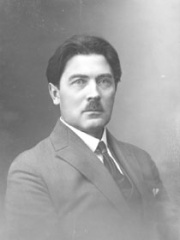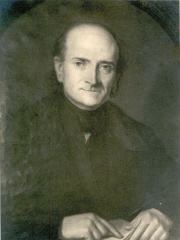


The Most Famous
LINGUISTS from Estonia
Top 3
The following people are considered by Pantheon to be the most legendary Estonian Linguists of all time. This list of famous Estonian Linguists is sorted by HPI (Historical Popularity Index), a metric that aggregates information on a biography's online popularity.

1. Johannes Aavik (1880 - 1973)
With an HPI of 62.73, Johannes Aavik is the most famous Estonian Linguist. His biography has been translated into 36 different languages on wikipedia.
Johannes Aavik (8 December [O.S. 26 November] 1880 – 18 March 1973) was an Estonian linguist and innovator of the Estonian language.

2. Paul Ariste (1905 - 1990)
With an HPI of 62.08, Paul Ariste is the 2nd most famous Estonian Linguist. His biography has been translated into 28 different languages.
Paul Ariste (3 February 1905 – 2 February 1990) was an Estonian linguist renowned for his studies of the Finno-Ugric languages (especially Estonian and Votic), Yiddish and Baltic Romani language. He was born as Paul Berg, in Rääbise, Võtikvere Parish (now Jõgeva Parish), Kreis Dorpat, Governorate of Livonia, Russian Empire, but in 1927 Estonized his name to Ariste. He graduated from the University of Tartu and subsequently worked with it. Ariste wrote his M.A. thesis ("Eesti-rootsi laensõnad eesti keeles") on Swedish – viz. Estonian Swedish dialect – loanwords in Estonian, his doctoral thesis ("Hiiu murrete häälikud") treated the Hiiumaa dialect of Estonian language. From 1945 to 1946, Ariste was imprisoned by the Soviet authorities (for having been member of Veljesto, a student association in independent Estonia) Since 1927 Paul Ariste eagerly participated in activities of Estonian Folklore Archives, where he established collections of Jewish, Swedish and Romani folklore, and contributed a lot to collections of Finno-Baltic minorities and Old-Believers of Peipsi region. He was the head of the Finno-Ugrian Department at the University of Tartu and one of the two most instrumental personalities in reviving Soviet Finno-Ugrian studies. Ariste founded the journal Sovetskoye finnougrovedeniye (Советское финноугроведение; Soviet Finno-Ugric Studies, later renamed Linguistica Uralica). He was also a notable Esperantist, and a member of the Academy of Esperanto between 1967 and 1976. He was also listed in a year 2000 issue of the Esperanto magazine La Ondo among the 100 most eminent Esperantists. He died in Tartu, aged 84.

3. Ferdinand Johann Wiedemann (1805 - 1887)
With an HPI of 58.19, Ferdinand Johann Wiedemann is the 3rd most famous Estonian Linguist. His biography has been translated into 19 different languages.
Ferdinand Johann Wiedemann (30 March [O.S. 18 March] 1805 in Hapsal (now Haapsalu) – 29 December [O.S. 17 December] 1887 in Saint Petersburg) was an Governorate of Estonia linguist who researched Uralic languages, mostly Estonian. Wiedemann was also a botanist. Wiedemann was of German-Swedish origin. In 1869 he published an Estonian-German dictionary (Ehstnisch-deutsches Wörterbuch), which was the richest dictionary of Estonian words for a long time.
People
Pantheon has 3 people classified as Estonian linguists born between 1805 and 1905. Of these 3, none of them are still alive today. The most famous deceased Estonian linguists include Johannes Aavik, Paul Ariste, and Ferdinand Johann Wiedemann.
Deceased Estonian Linguists
Go to all RankingsJohannes Aavik
1880 - 1973
HPI: 62.73
Paul Ariste
1905 - 1990
HPI: 62.08
Ferdinand Johann Wiedemann
1805 - 1887
HPI: 58.19
Overlapping Lives
Which Linguists were alive at the same time? This visualization shows the lifespans of the 3 most globally memorable Linguists since 1700.

